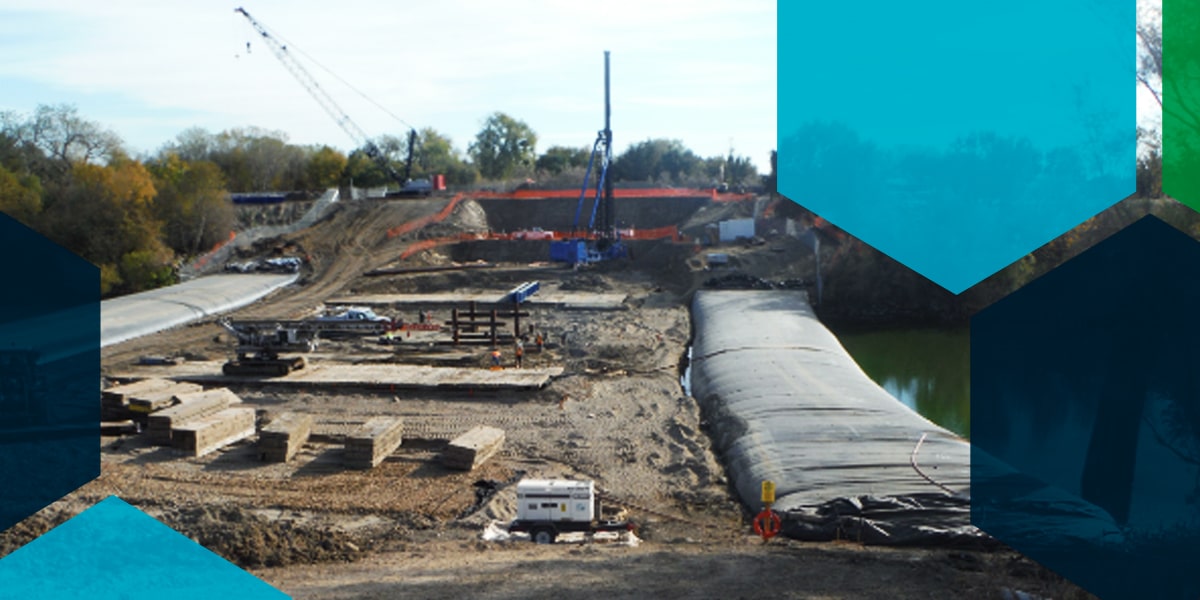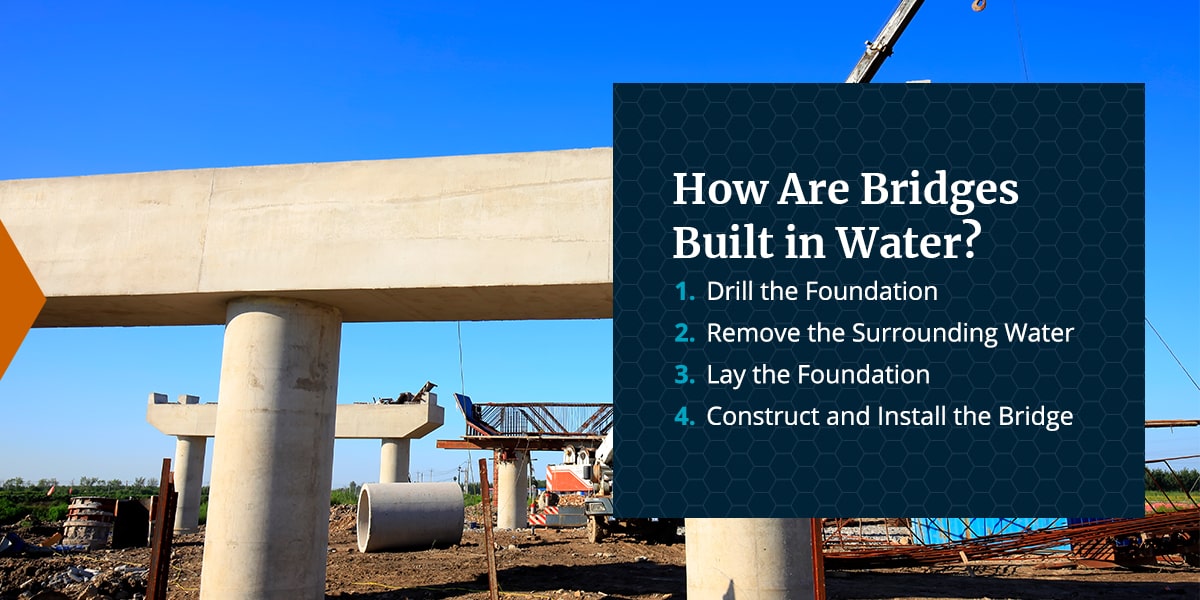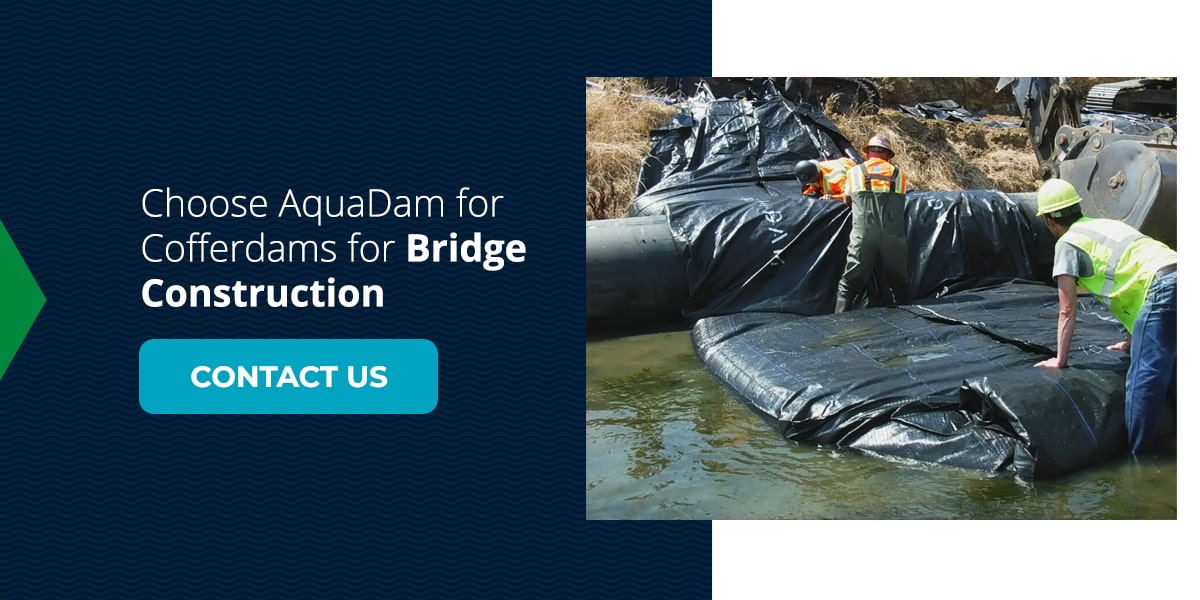Benefits of Water-Filled Cofferdams for Bridge Repair
Underwater bridge construction and maintenance is a tedious, time-consuming task. However, this upkeep is vital as infrastructure ages and wears over time. Workers need a safe, dry space to perform these projects. That’s where cofferdam construction comes onto the scene. Learn more about the importance of a cofferdam for bridge repair.
Cofferdams for Bridge Construction
A cofferdam — sometimes called a caisson — is an enclosure built within a body of water. It enables a crew to pump water out of a specific area. When used for bridge construction and repair, a cofferdam helps dry out the region below the water’s surface so crews can work on underwater portions of the structure.
Workers can excavate, pour concrete, weld, repair and perform other tasks as the cofferdam diverts water flow. However, it’s important to note that these structures are generally temporary. Crews likely won’t get multiple uses from a single cofferdam.
How Are Bridges Built in Water?
Bridge building in water, such as a lake or ocean, is an engineering feat requiring precision, coordination and skill. Therefore, it calls for an innovative construction technique. The cofferdam plays a substantial role in building bridges over water.
While each project can vary depending on the body of water, type of bridge and soil conditions the bridge pier rests on, below are the general steps of underwater bridge construction.
1. Drill the Foundation
First, workers drill long, large piles into the water body floor. This creates a deep enough hole for a stable base. The foundation requires a hard and solid surface, like soil with high bearing capacity or the earth’s rocky crust.
The crew uses the drill to excavate underwater until it reaches a rocky base or good bearing soil. The type, structure and total weight of the bridge will determine the pile dimensions and hole depth.
Pile installation follows the excavation and drilling process. Modern piles are typically constructed of reinforced concrete. However, the bridge may require other materials depending on the project factors at play.
2. Remove the Surrounding Water
The next step is dewatering the construction site. Dewatering is critical for the following reasons:
- Crew and equipment safety: Dewatering provides a safer environment for construction workers and site managers. They are less likely to sustain injuries from slipping and falling, and the lack of contaminated standing water reduces health risks. Likewise, standing water can cause moisture buildup around expensive construction equipment. Excessive moisture buildup can delay or damage the machinery. This makes dewatering safer for equipment as well as humans. The process must also follow safety and regulatory standards from the U.S. Environmental Protection Agency (EPA).
- Stable work site: Dewatering can prevent potential construction hazards like equipment breakdowns, mudslides and lack of foundation stability. The process thoroughly prepares the site for foundation laying, excavating, cement pouring and other steps.
- Low environmental impact: Standing water poses multiple risks. It can collect toxins from the surrounding region and create a breeding ground for disease-carrying mosquitos. Furthermore, standing water can cause erosion. Dewatering helps keep these hazards to a minimum.
- Timely scheduling: Dewatering reduces the likelihood of delays from heavy rainfall. Staying on schedule is integral in construction work. While crews usually account for some delay, completing the project as soon as possible is ideal.
A water-filled cofferdam allows for quick water site draining. They’re generally more effective than traditional methods that require more time and labor.
The goal is to create a waterproof barrier for the isolated site, then pump out the remaining water for a dry work environment. Large barriers require support or bracing. Otherwise, the walls could collapse from surrounding water pressure. Engineers use different techniques and materials to construct cofferdams.
3. Lay the Foundation
Next, the crew hammers down pylons or piers into the firm soil or bedrock, forming a battered pile foundation. A pile driver uses extreme force or vibration to ground the piers.
4. Construct and Install the Bridge
The crew brings the constructed and assembled bridge foundation parts to the site, then proceeds with the installation. This process involves floating and lowering an assembled pier or pile into the water, then installing it with a preexisting foundation.
Advantages of Construction Dams
Construction dams such as cofferdams offer numerous benefits for bridge construction, including:
- A cost-effective, reliable dewatering solution that minimizes environmental impact.
- A stable work environment that helps protect workers and equipment throughout the project.
- A portable water removal method that allows for efficient installation and disassembly.
- A time- and labor-saving solution.
AquaDams for Bridge Repair
The AquaDam® is a water-filled cofferdam designed for dewatering and flood control. It features a woven outer sleeve with two water-tight polyethylene tubes. An interior stability baffle provides ample firmness for temporary construction applications.
When properly installed, the AquaDam® can withstand up to 75% of its height in water depth and external mud in ideal conditions. It won’t roll once filled with water, serving as a short-term dam for various projects.
AquaDam installation and removal is a relatively straightforward process:
- Unroll the AquaDam: The AquaDam® will arrive rolled up like a carpet. The height and length specifications will determine its weight. A team of roughly four to six people, depending on the size of AquaDam® being installed, is required to position and maneuver the product. At least one piece of equipment — like a backhoe or excavator — may also be needed depending on the product size. Place the AquaDam® at the top of the starting bank, then unwrap and unroll it across the body of water requiring dewatering. This will expose the two plastic fill tubes.
- Connect and turn on the pumps: After unrolling the AquaDam, pumps are needed to fill the cofferdam with onsite water. Connect the pumps to the 3-inch lay-flat fill hoses, or run personal hoses into the two fill tubes. Be sure to pad any pumps or hoses inserted into the fill tubes to prevent tube damage. Turn on the pumps, pumping water evenly into the water-tight chambers.
- Stop the pumps when necessary: Turn off the pumps once the AquaDam® reaches the recommended height. Underfilling the AquaDam® by 4-6 inches can account for low spots in the water. Overfilling the dam can cause breakage.
Choose AquaDam® for Cofferdams for Bridge Construction
When you’re looking to use temporary water-filled cofferdams for bridge repair and construction, AquaDam® is the solution. Its installation process is more cost-effective and requires less effort than traditional methods. It reduces environmental impacts by minimizing contaminants that frequently come with other dam styles.
Additionally, the side-by-side tube structure provides more stability than other water-filled cofferdams. AquaDam® comes in various lengths and heights, aligning with virtually any path requirement. Therefore, your construction crew can seamlessly find the right specifications for your project.
Turn to AquaDam® for your bridge construction and repair applications. Contact us today to request a quote.



